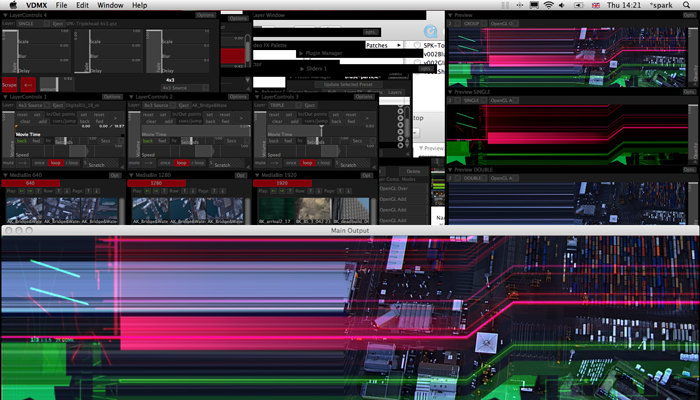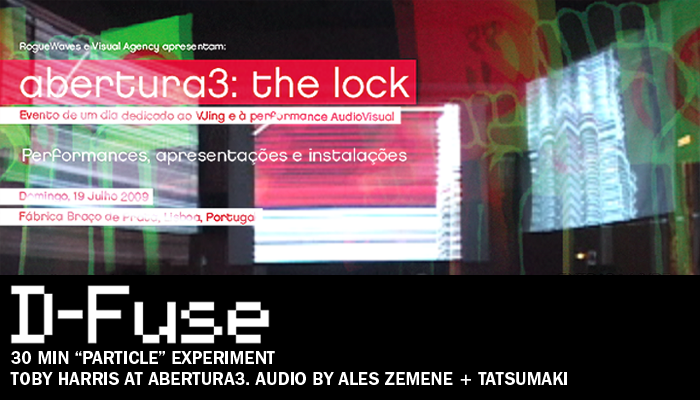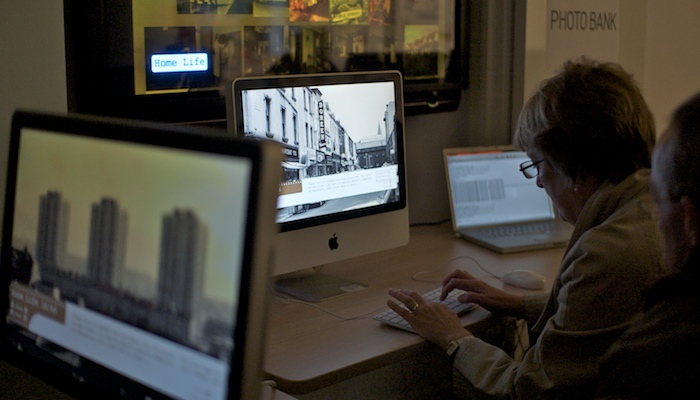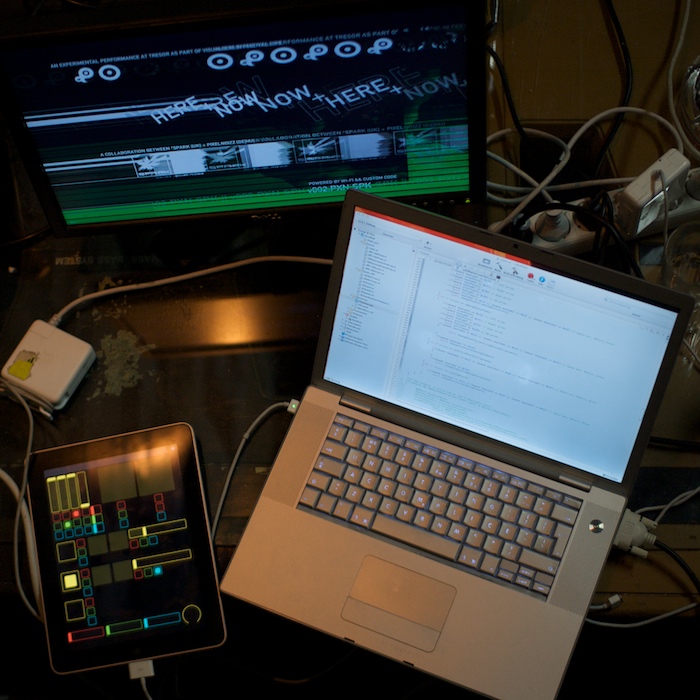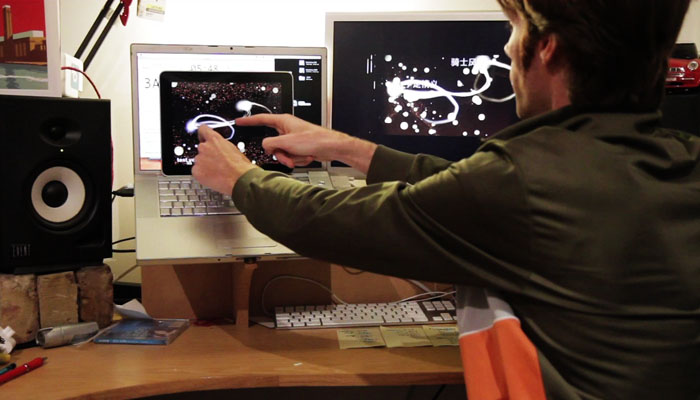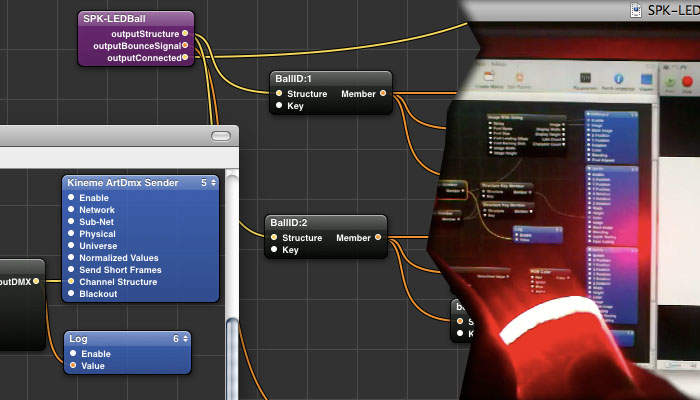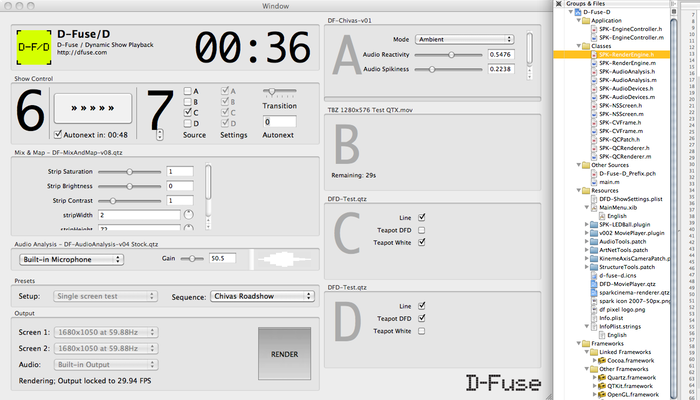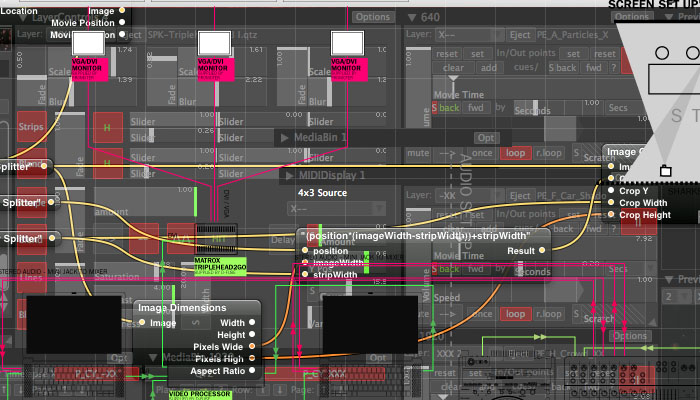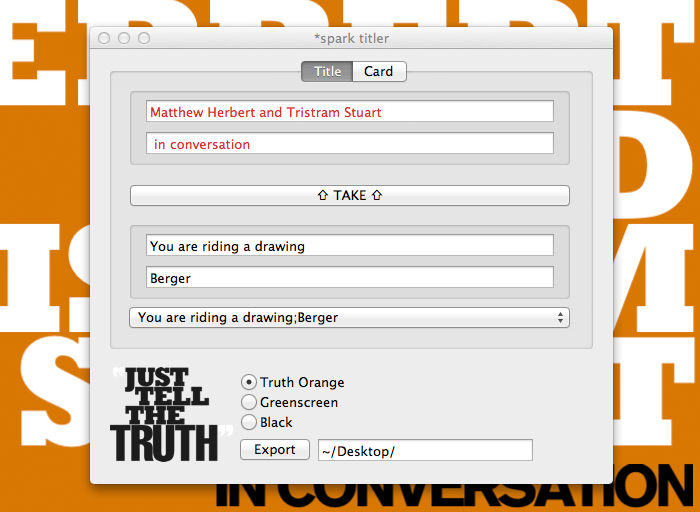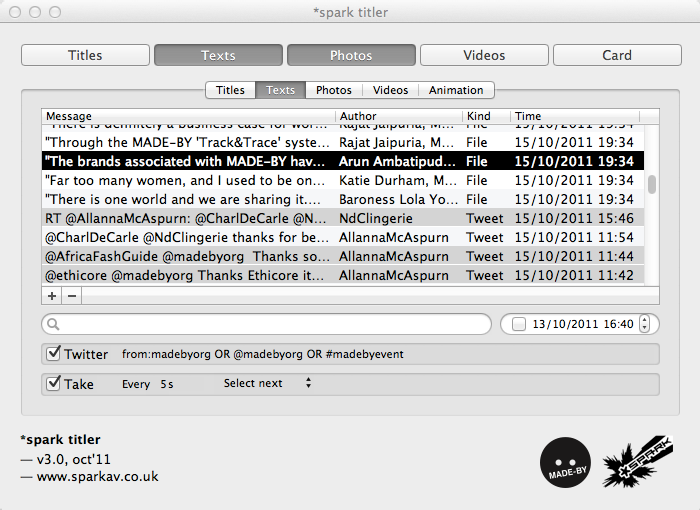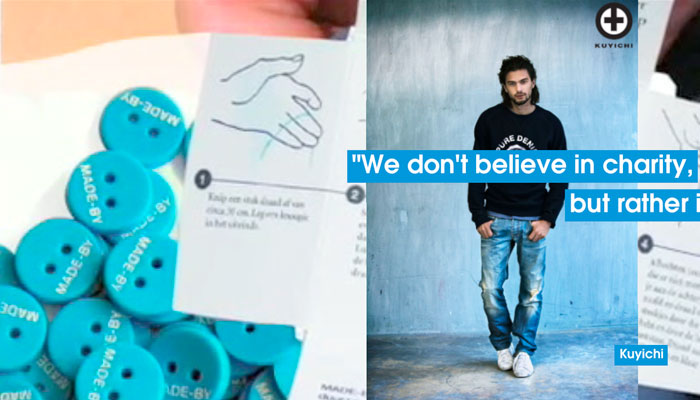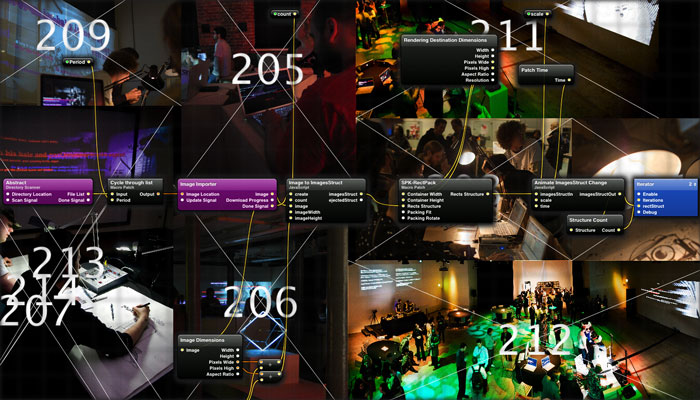beyond visible things like keane3D, lots of work has been going on in the background with d-fuse this past year or so. some of it pitching, some of it pushing along internal projects, and at the moment a massive commercial job under NDA: all things which don’t really get to this diary. but i’m glad to announce a little preview of something i’ve been working on a while, which is transforming d-fuse live.
as part of electrovision on saturday the 18th july at roxy bar and screen, d-fuse will be performing for the first time with their high-def laptop live setup. it will be something between a test of the setup and a preview of the performance that will become ‘particle’, so all are welcome and beta-tester feedback appreciated!
there’s much more to say about what has been developed for this setup, but in the meantime here is the blurb i wrote for electrovision:
D-Fuse present a work-in-progress viewing of their new live performance, an experimental audio-visual triptych exploring urban conditions. Having mastered an HD production process for films such as Brilliant City and Surface, they have challenged themselves to bring this back into the live arena and with the graphical sensibility they are noted for.
pictured: vdmx work-in-progress setup, with amongst other things custom quartz composer 4x3 into 12x3 layer, backed by unreleased open-gl based qc plugins, and fronted by a native vidvox control layout.

